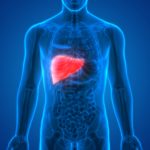Review Study Finds 5% Higher Risk of Liver Cancer in Porphyria Patients
Written by |

People with porphyria have a 5% increased risk of developing primary liver cancer compared with the general population, according to a recent review study.
The findings highlight the importance of regular cancer screenings in porphyria patients, especially those older than 50 years, researchers noted.
The study, “Risk of Hepatocellular Carcinoma in Patients with Porphyria: A Systematic Review,” was published in the journal Cancers.
Porphyria comprises a group of genetic disorders in which the production of heme — a molecule that enables red blood cells to transport oxygen — is disrupted, leading to the toxic buildup of heme building blocks, called porphyrins, and their precursors.
Hepatic porphyria types are characterized by the accumulation of these molecules in the liver. While symptoms of porphyria can manifest in many organ systems, liver disease is common and can progress to significant fibrosis (scarring) or cirrhosis, a severe phase of fibrosis that prevents normal liver function.
While multiple risk factors for liver cancer have been identified, chronic liver disease and cirrhosis are thought to contribute the most, raising the possibility that porphyria could be linked to an elevated risk of liver cancer.
It has been recommended that patients diagnosed with porphyria, especially those older than 50 or with cirrhosis, be screened for liver cancer, but because porphyria is rare, the link remains relatively under-investigated.
In the study, researchers in the U.S. and Italy performed a systematic review of previously published research to understand the prevalence of hepatocellular carcinoma (HCC) — the most common type of primary liver cancer — in porphyria patients.
Included in the analyses were 19 studies, containing information from 7,281 porphyria patients, 3,476 of whom were female, with an age at diagnosis ranging from 30 to 80 years. The median study follow-up time ranged from three to 24 years. Nine of the studies were conducted in Scandinavia, three in Spain, two in Italy, and one each in the Netherlands, Belgium, Germany, France, and the U.S.
Details on porphyria subtype were not consistently reported across the studies.
Primary liver cancer was diagnosed in 351 (4.8%) patients, 243 (3.3%) of whom had HCC. Most patients were older than 50 when diagnosed with HCC. A small subset of patients — 18 in total — were diagnosed with choloangiocarcinoma, a cancer of the small tubes that carry digestive fluid from the liver.
Overall, the data indicated that porphyria patients have about a 5% increased risk of developing liver cancer compared with the general population.
The researchers also noted that while liver fibrosis or cirrhosis caused by porphyria are thought to be a significant risk factor for liver cancer, HCC progression was not preceded by either in several patients.
Treatments, including liver resections or transplants, and rates of cancer recurrence or death were not consistently reported across the studies.
Nonetheless, more than 30 patients were reported to have had a liver resection — surgery to remove the affected part of the liver — with variable rates of recurrence reported.
One study reported that from 335 patients, 56 had a liver transplant, and none experienced cancer recurrence after a mean follow-up of three years.
Deaths were reported for 327 porphyria patients with liver cancer.
“Our findings highlight the risk of HCC in this patient cohort and support current guidelines of liver imaging at 6–12 month intervals after the age of 50 years,” the researchers wrote.
The team noted the levels of alpha-fetoprotein (AFP), a liver protein, were elevated in patients with HCC across several of the studies. AFP could thus be used as a biomarker in HCC screening, the researchers suggested.
A lack of information related to lifestyle risk factors, such as obesity or alcohol use in some studies and other missing or inconsistent data were noted as study limitations.
“Further research should address the development of clinical models for the early detection of HCC in patients with different phenotypes of porphyria,” the team wrote.







